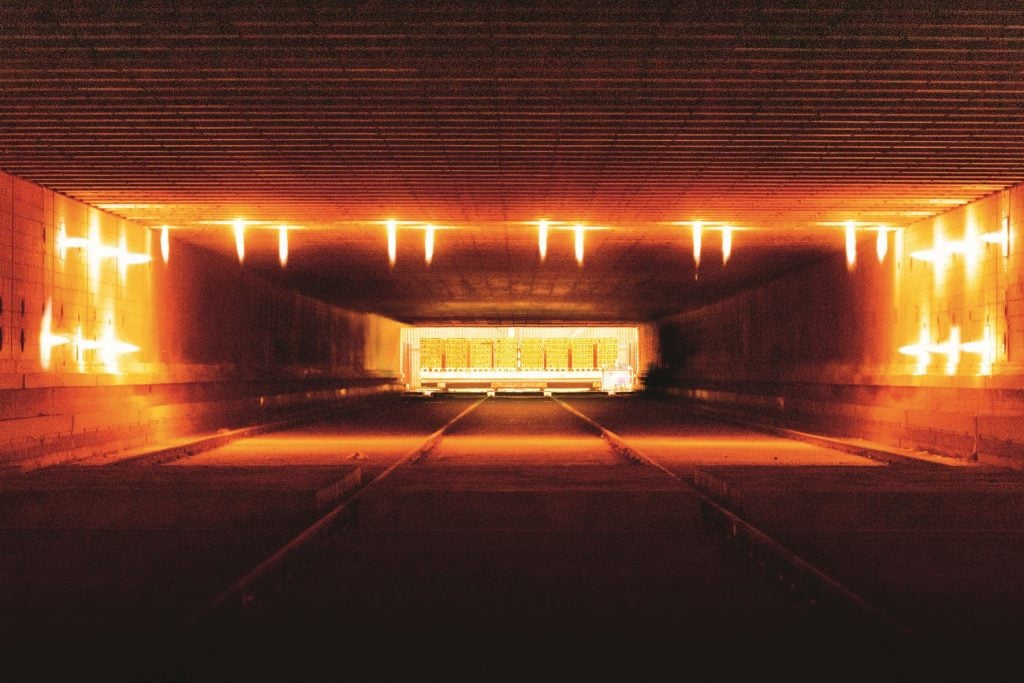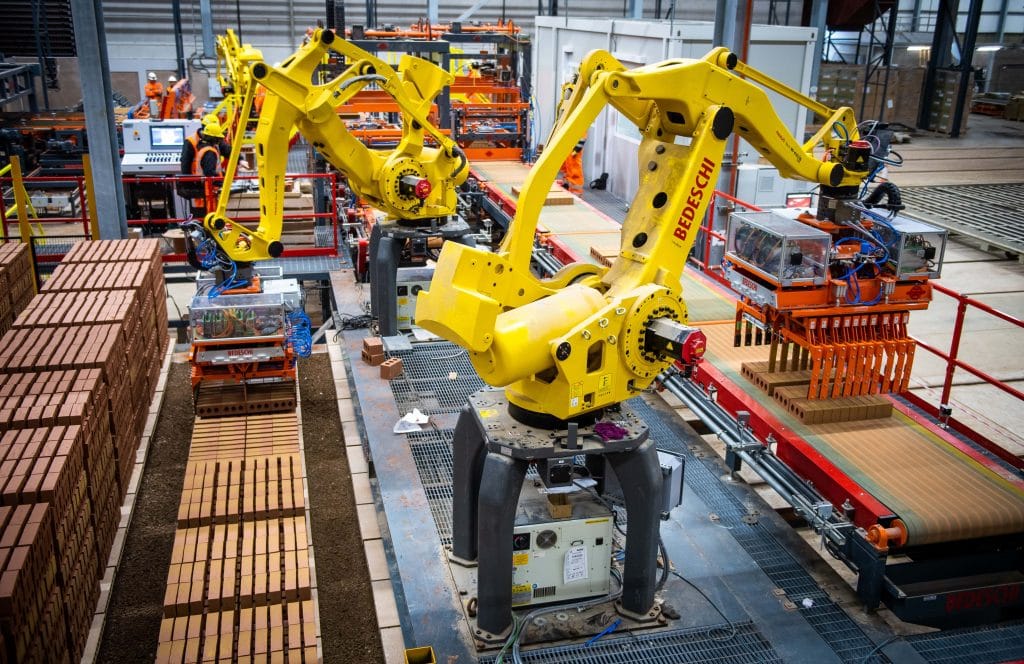Forterra Desford Redevelopment
Situated just two miles from the M1 with excellent transport links, the new Desford site in Leicestershire, UK, will offer a range of red and buff bricks designed to meet the demands of housebuilders.
On a company-wide level, this factory redevelopment alone translates to a production increase of 19% from 2025 onwards. At the heart of the plant’s efficiency improvements are two new kilns designed to reduce energy consumption and carbon emissions. The main benefit is its greater thermal efficiency, which comes from the kiln-carb design and additional thermal insulation, leading to greater emphasis on whole-life costings and energy savings. The plant will incorporate a tunnel dryer, which is superior in its thermal efficiency compared to the more common chamber dryer that was in place at the previous site and many other UK brick plants.
Additionally, more modern control hardware and methodologies allow for tighter control over the kiln conditions, creating the most efficient use of fuels for the process. Modern kilns also consume less gas and have more effective emissions-scrubbing technology, reducing the emissions of carbon dioxide as well as other harmful waste gases. And the Desford factory will also generate a large proportion of its energy from solar panels. Currently, over 7,000 solar panels are being used that will generate approximately 2.9mln watts of power – thereby constituting around 16% of the onsite electricity demand.
Cumulatively, these innovations will enable the new factory at Desford to emit approximately a quarter less carbon dioxide per brick than the old factory – a reduction in emissions that is well in line with the industry drive towards sustainable production.

Restricting the belly
With a goal of attaining a 50% reduction in single-use plastics by 2025, new technologies and methods are being implemented to reduce plastic usage and wastage.
Over the last three years, Forterra has partnered with packaging machinery and consumables suppliers to trial a new ‘belly-band’ packaging solution that can meet the needs of traditional hoodless packs without a drop in performance. This ‘belly-band’ solution will be implemented at the Desford factory, having already been put into practice across 30% of Forterra’s production, including at Accrington Brick and Kirton.
This new packaging solution will use 36% of the amount of plastic used in the previous packaging technology, and30% of the material is composed of recycled polythene, sized to be as thin as possible without incurring any reduction in performance.
This is necessary because on a hoodless pack there is one layer of rotated bricks that is at a greater risk of falling out of the pack when being transported via forklift. The belly wrap was developed to specifically retain this layer of brick while keeping the amount of plastic used at a minimum.
The Desford factory will see a massive increase in production volumes for Forterra, from 80 million to 180 million bricks per year. Simultaneously, innovations will enable the new factory to emit approximately a quarter less carbon dioxide per brick than the old factory.
“The packaging solution complements several other investments and developments Forterra have made over the past year, such as a solar farm, which will render 70% of our power usage electric by 2025; a new eco-fleet of trucks, which will reduce our transportation emissions; and two redevelopments taking place at Wilnecote and Desford, both of which will implement new robotics and telematics technology, as well as the new packaging solutions.” says Stephen Harrison, Chief Executive of Forterra.
The Desford factory will see a massive increase in production volumes for Forterra, from 80 million to 180 million bricks per year. Simultaneously, innovations will enable the new factory to emit approximately a quarter less carbon dioxide per brick than the old factory.

Telematic transformation
The overall philosophy of the Desford plant design is two-fold. First, that there should be no single point of failure, and second, in the cases where there is a breakdown, any repair should take less than fifteen minutes to complete. This will enable the plant to have leading levels of Overall Equipment Effectiveness.
The Desford site therefore incorporates digital and telematic transformations. The new manufacturing supervisory control and data acquisition (SCADA) system is able to feedback the kind of faults a machine has suffered each shift, right down to a component level, so that the question of what needs to be fixed or optimised is not limited to what the naked human eye can observe.
With the SCADA system in place, faults will be pre-empted, meaning that they will be fixed faster and more significant breakages will be avoided. Where machines previously needed to be serviced every few months to check for faults, regardless of whether there were actually any faults in place, the new technology will ensure that only those machines in need of repair will be serviced, thus allowing for a more economical, high-performance approach to production.
The new manufacturing supervisory control and data acquisition (SCADA) system is able to feedback the kind of faults a machine has suffered each shift, right down to a component level, so that the question of what needs to be fixed or optimised is not limited to what the naked human eye can observe.
In combination, these innovations will ensure that Desford is not only the largest brick factory in Europe, but that its high production capacity is coupled with excellent standards of sustainability alongside a modern approach to streamlining and optimising the entire production process.
To ensure continued production during this redevelopment project, the existing Desford factory remains open and continues to produce high-quality bricks.
